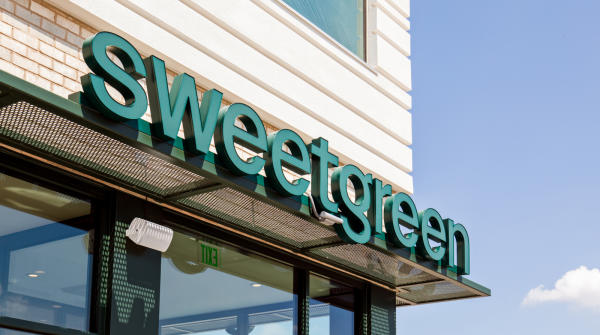
Alphabet (NASDAQ:GOOGL), HP Inc. (NYSE:HPQ), and Sweetgreen (NYSE:SG) are highlighted as key players in their respective industries.
Sweetgreen’s upward revision of its full-year same-store sales growth forecast signals its expanding market reach and popularity.
Despite a negative free cash flow, Sweetgreen’s cash position shows a modest increase, indicating investment in growth amidst operational efficiency challenges.
Jerry Castellini, the president and CIO of CastleArk Management, recently shared his insights on CNBC’s ‘Power Lunch’ about three companies that are making waves in their respective industries: Alphabet (NASDAQ:GOOGL), HP Inc. (NYSE:HPQ), and Sweetgreen (NYSE:SG). Alphabet, with its stronghold in the digital world through Google, continues to be a key player in the internet sector. HP Inc. remains a significant name in the computing and printing markets, while Sweetgreen is rapidly becoming a notable contender in the fast-casual dining scene. Castellini’s expertise in stock analysis and investment strategies brings valuable perspectives on these companies, making his analysis a must-watch for investors interested in these sectors.
Sweetgreen, in particular, has shown impressive performance, as highlighted by Seeking Alpha. The company has revised its full-year same-store sales growth forecast upwards, thanks to an increase in customer traffic and its growing popularity during dinner hours. This adjustment reflects Sweetgreen’s expanding market reach and its ability to attract more customers outside the traditional lunchtime rush. Despite a year-to-date stock price rally of over 200%, Sweetgreen trades at a slight discount compared to Chipotle’s revenue multiple, even as Chipotle faces challenges following its CEO’s departure. This valuation discrepancy suggests that Sweetgreen may still offer an attractive investment opportunity for those looking at the fast-casual dining sector.
From a financial standpoint, Sweetgreen’s quarterly cash flow statement reveals a complex picture. The company generated $19.12 million in net cash from operating activities, indicating healthy operational performance. However, it also reported a net cash outflow of $21.25 million from investing activities, primarily due to significant capital expenditures of the same amount. This indicates Sweetgreen’s commitment to investing in its assets, crucial for long-term growth. Additionally, financing activities contributed an extra $3.41 million in cash, slightly offsetting the cash used in investments.
Despite these cash flows, Sweetgreen experienced a negative free cash flow of $2.14 million. This metric is important because it shows the cash that a company generates after accounting for cash outflows to support operations and maintain its capital assets. A negative free cash flow can indicate that a company is investing heavily, which seems to be the case with Sweetgreen. However, the company’s cash position slightly improved, from $243.76 million at the beginning of the period to $244.58 million by the end, reflecting a modest increase despite the negative free cash flow. This improvement, coupled with a negative change in working capital of $3.36 million, suggests that while Sweetgreen is investing in growth, there are challenges in its operational efficiency or short-term financial health that need to be monitored.
